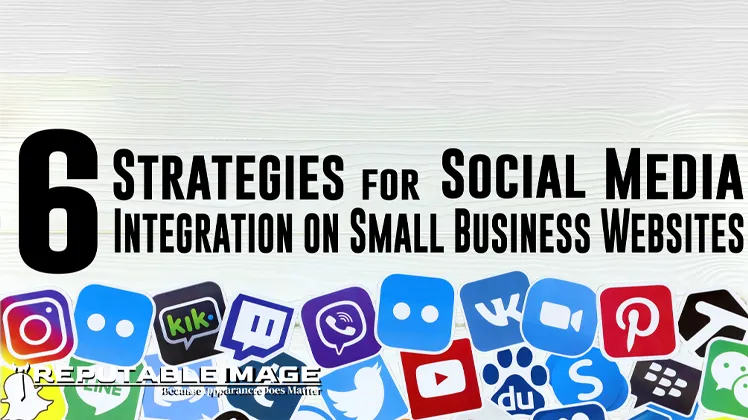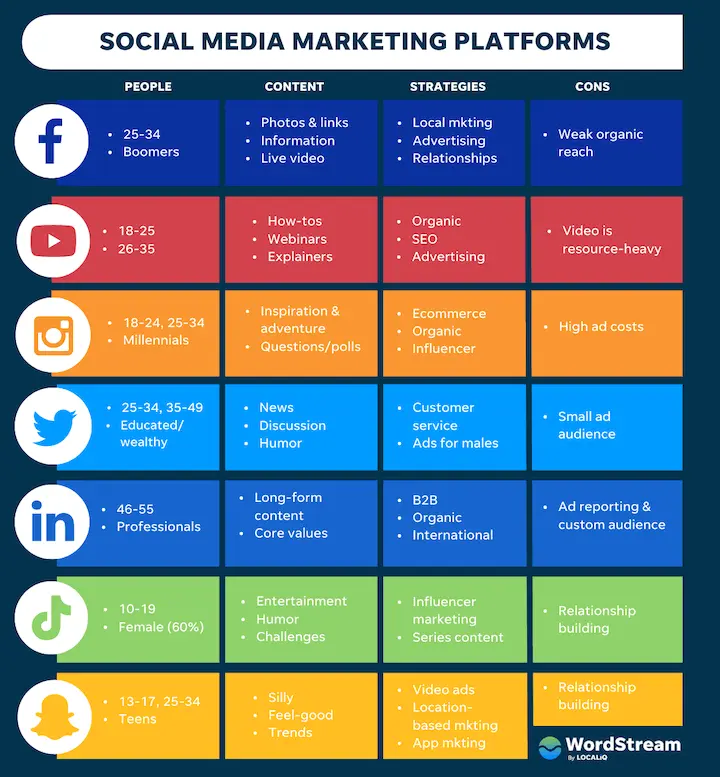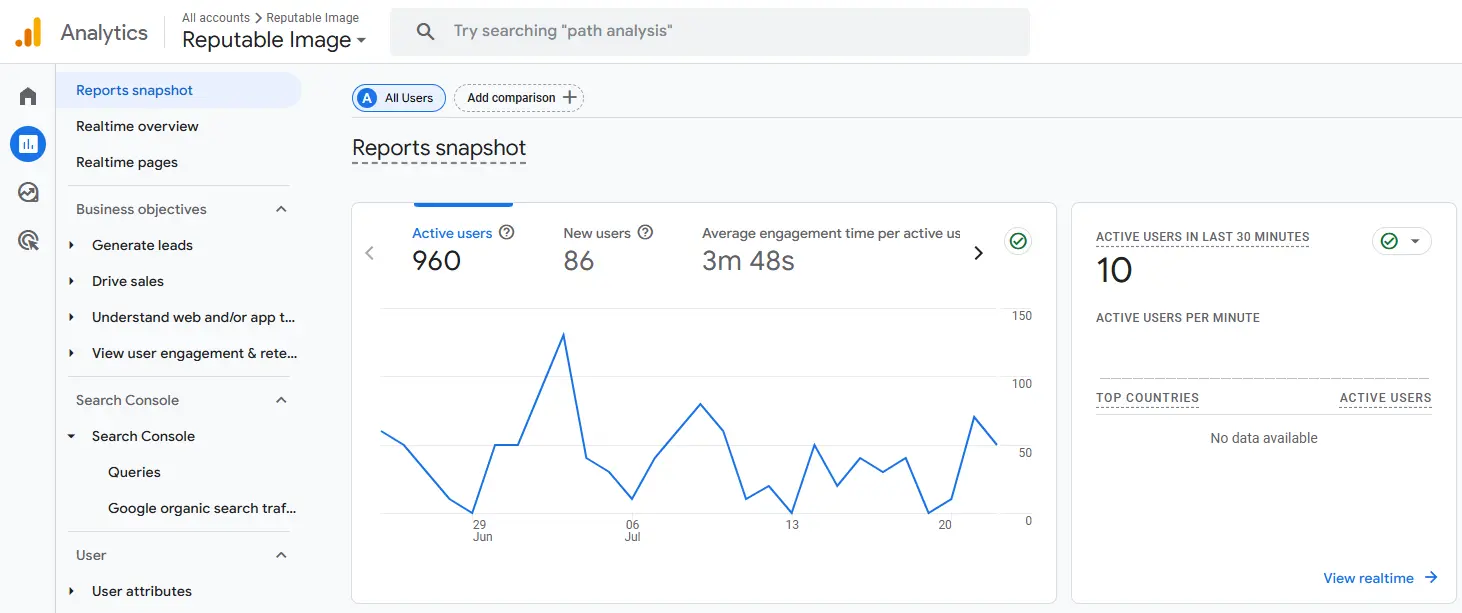
6 Strategies for Social Media Integration on Small Business Websites
Today's marketing is analog. Handwritten signs make up every advert on each building in town. Everywhere you look at, billboard signs are all handmade. Everything is crafted by hand and was created with a hammer and chisel. Digital is a concept nobody has ever heard of.
In a different universe, maybe.
Sure, billboards and physical signs aren't going anywhere anytime soon but they were designed digitally, not made by hand.
Today, everything in business is digital. Transactions, graphic design, management, clocking in and out: these are mostly done digitally, and marketing is no exception. If you choose to pay for expensive billboards spread out throughout town, your ROI might not end up being the best – but thanks to algorithms, if you choose to market your business through social media your chances of reaching your niche increase exponentially. If you want people to find your business online, a website is a great place to start, but it's not enough without social media integration.
Which social media platforms are best for my business?

The best social media platforms for your business are different from industry to industry. It may feel a bit overwhelming if you're just starting out and having 6+ social media accounts seems like climbing a mountain. You don't need to be everywhere, but you do need to be where your audience is. Here's an infographic by WordStream that could help you find yours:

If you're still on the fence as to where to begin, we recommend you choose 1 platform and stick to it just to dip your toes.
By setting up your social media platforms you empower your businesses to converse directly with customers, gather feedback, and amplify your brand's voice. Infographics perform especially well on social—learn how in Why Infographics Matter for Small Business.
Benefits of Social Media for Small Businesses:
Boosting engagement with user generated content
People engage with the brands they recognize online, and yours will be no exception. Perseverance, sticking to a schedule, and posting engaging content will invite followers, which start to snowball. When people see real customers posting about your brand, they're more likely to trust—and purchase from—you. Embedding a live Instagram feed or a rotating carousel of user-submitted photos invites authenticity and encourages more social sharing.
Strategy #1: Embedding Live Facebook Posts
A Facebook business website widget showcasing your latest reviews and posts acts as social proof. Potential clients can read testimonials without leaving your site, making them more likely to convert. Show your audience that you’re active on social media and they’ll be more likely to approach you, either through your website or your Facebook account directly.
To generate the code you need to insert your Facebook feed into your website, we’ve got that link straight from Facebook themselves, so you can head over there once you finish reading our blog post: https://developers.facebook.com/docs/plugins/page-plugin
Strategy #2: Integrating “Share” & “Follow” Buttons
Embedding social media “Share” and “Follow” buttons across your site is a cornerstone of any robust social media marketing strategy. By placing these interactive elements on blog posts, product pages, and your Facebook business website, you’re tapping into the semantic triggers that prompt users to amplify your content organically. Rather than static icons, leverage dynamic tooltips that surface the number of recent shares or contextual calls-to-action (e.g., “Loved this tip? Share on Facebook!”). This kind of microcopy, informed by user intent data, transforms passive visitors into active promoters, boosting your social media marketing reach without a hefty ad spend.
Strategy #3: Showcasing Social Media Feeds
Curating live social media feeds on your site leverages real-time engagement and taps into the power of user generated content. By embedding an Instagram grid or an X timeline directly on your homepage or a dedicated “Community” page, you’re surfacing fresh voices and authentic conversations. This will enable you to detect trending topics, and highlight positive sentiment. For example, natural language understanding can spot and tag customer praise (“Loved my new eco-friendly tote!”) so you can elevate that content with a “Top Review” badge. This entity recognition enriches the user experience—visitors instantly see which posts resonate most and feel invited to join the conversation rather than passively scroll.
To keep your digital marketing strategy perpetually fresh, automate feed updates with an API-powered scheduler that pulls new posts every hour. Layer in keyword filtering (e.g., only show posts containing your brand name or campaign hashtag) and sentiment analysis to ensure every featured post aligns with your desired tone. Harness topic modeling to group similar posts—product launches, behind-the-scenes glimpses, user testimonials—so your site dynamically reorganizes content clusters based on user interest. These techniques reduce manual curation, cut down moderation time, and sharpen your social media marketing strategy by spotlighting content that drives the highest engagement. As your small business site becomes a living mosaic of real customer stories, you’ll build trust, fuel more Facebook business website interactions, and empower visitors to become active brand advocates. For guidance on scheduling and promoting news and blog posts, see Integrating Blogs and News Sections for Content Marketing.
Strategy #4: Leveraging User-Generated Content
Tapping into user generated content (UGC) is one of the most potent social marketing tips for small businesses, because nothing speaks louder than authentic customer voices. Start by inviting buyers to leave reviews or share photos—embed a feedback widget on product pages, for example, and then share that feedback on your social media or website. Pay special attention to enthusiastic testimonials (“This coffee grinder changed my morning ritual!”). Look for phrases like “fast shipping” or “easy cleanup”, so you can surface the most compelling snippets. This curation method sends a clear social media marketing signal: you value genuine feedback over polished ads.
Next, display customer photos and testimonials in an interactive gallery that’s dynamically updated via a hashtag feed. Use entity recognition to group images by product feature or use case—say, #EcoTote on vacation vs. #EcoTote at work—and present them in separate carousels or lightboxes. Couple this with contextual CTAs (“See more real-life styles →”) that tap into the same semantic clusters, seamlessly guiding visitors from inspiration to purchase. This forms a virtuous cycle: as you highlight UGC on your Facebook business website or homepage, you’re giving kudos to contributors, encouraging more shares, and expanding your social media marketing strategy with zero ad spend.
Finally, integrate this UGC pipeline into your broader marketing strategies by tagging each testimonial with metadata—platform, sentiment score, engagement rate—and feeding those labels into your analytics. This will reveal which product features or use cases resonate most, enabling you to tailor future campaigns and on-site copy with razor-sharp relevance. By harnessing UGC through smart automation and semantic insights, you transform passive visitors into vocal advocates—and turn every shared photo or review into a scalable growth engine for your small business.
Strategy #5: Social Login for Enhanced UX
Streamlining user registration with social media logins transforms friction into fluidity—visitors tap a single button instead of typing out lengthy forms. By integrating “Login with Facebook” or “Continue with Instagram” directly into your Facebook business website, you’re leveraging OAuth protocols to authenticate users instantly. Thanks to autocomplete, you can reduce drop-off rates and increase completion likelihood. This seamless entry point aligns perfectly with modern digital marketing strategy, allowing you to extract profile details (name, email, locale), thus turning anonymous browsers into known contacts without interrupting their journey.
Once authenticated, your social media marketing strategy shifts from generic messaging to hyper-personalization. Semantic user profiles—built from interests and past behaviors on social media platforms—enable dynamic content swaps: show returning visitors tailored product recommendations, location-specific promotions, or personalized greetings (“Welcome back, Sarah!”). Entity recognition further enriches this data, tagging users by inferred intent (“interested in eco-friendly gear”) so you can trigger targeted email workflows or onsite pop-ups. These nuanced marketing strategies foster deeper engagement, as every touchpoint feels curated rather than broadcast.
From an analytics perspective, social logins provide a unified user ID across channels—your management of social media metrics becomes holistic. You can track how a Facebook-authenticated user moves from click on a social media advert to completing a purchase on your site, and then back to sharing their experience on their own feed. This closed-loop insight sharpens ROI calculations and informs future campaign optimizations. In essence, by weaving social login into your small business site, you’re not just simplifying UX—you’re amplifying data-driven growth and cementing your brand’s social credibility.

Strategy #6: Promoting Your Social Media Advert Campaigns
To make your social media advert campaigns sing on your website, start by matching each ad’s message to the page’s topic. Think of it like hand-delivering the perfect invite: if someone’s browsing your blog post on “Eco-Friendly Packaging,” serve up a bespoke Facebook carousel ad showcasing your green product line, complete with a “Shop Sustainably” button. This alignment ensures each impression feels like a helpful suggestion, not a cold sell.
Next, weave a simple retargeting flow right into your site’s fabric. After a visitor clicks that first “Shop Sustainably” ad, swap in a second creative that highlights a customer success story (“See how Jenna cut waste by 30%!”), and later, present a time-sensitive offer (“Flash Sale: 20% off today only”). By layering messages this way—built on core digital marketing strategy principles but written with the warmth of a conversation—you guide readers through discovery, trust-building, and finally, action.
Finally, measure and refine. Tie every on-site click back to its source ad, look for patterns in which headlines, images, or calls-to-action resonate, and iterate weekly. Sprinkle in eye-catching graphics—like progress bars or mini-countdown timers—and don’t shy away from a playful tone (“Almost there! Only 3 days left to grab this deal”). Balancing your setup with engaging storytelling and a dash of personality will boost both your SEO rankings and your readers’ delight—turning casual visitors into enthusiastic customers.
In Conclusion
Integrating social media into your website can boost engagement, build trust, and drive sales. By choosing the right platforms, embedding live posts, adding share buttons, showcasing feeds, featuring customer content, using social logins, and aligning ads with your pages, you create a dynamic online presence that attracts visitors and turns them into loyal customers.
If you need help with your website design or social media setup, we’re here for you. At Reputable Image, we build clean, fast websites and connect them to your social channels. Let us handle the tech so you can focus on your business.
👉 Ready to grow online? Contact Reputable Image today for a FREE consultation and see how easy it is to bring your brand to life.
